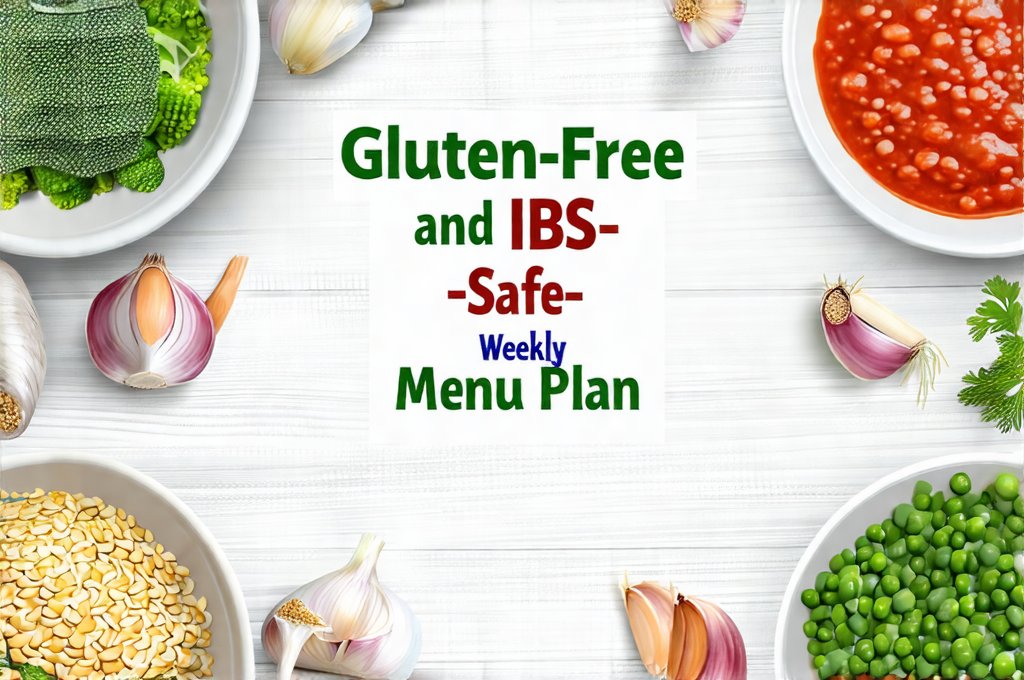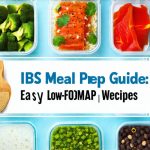Irritable Bowel Syndrome (IBS) impacts millions worldwide, often causing significant discomfort and disruption to daily life. Dietary modifications are frequently recommended as part of an IBS management strategy, and gluten – a protein found in wheat, barley, and rye – is often scrutinized due to its potential to exacerbate symptoms in some individuals. However, the relationship between gluten and IBS isn’t straightforward; many people with IBS aren’t actually sensitive to gluten itself but rather to FODMAPs (Fermentable Oligosaccharides, Disaccharides, Monosaccharides And Polyols) commonly found in gluten-containing grains. This means a completely gluten-free diet isn’t always necessary, but understanding how different foods affect your specific IBS triggers is crucial for finding relief.
This article focuses on creating a practical, week-long menu plan designed to be both gluten-free and considerate of common IBS sensitivities, leaning heavily into low-FODMAP principles where appropriate. It’s not about strict elimination but about informed choices that promote digestive comfort. We’ll explore recipes and meal ideas suitable for those navigating the complexities of IBS, aiming to provide a foundation for building a personalized dietary approach. Remember that individual tolerances vary greatly; what works well for one person might not work for another, so listening to your body is paramount. Considering a more holistic approach, exploring options like a gut health meal plan can be incredibly beneficial.
Understanding Gluten & IBS Triggers
The link between gluten and IBS symptoms isn’t always direct. While individuals with celiac disease must avoid gluten due to an autoimmune reaction, many people with IBS experience symptom flare-ups after consuming gluten but don’t have celiac disease. This is often attributed to Non-Celiac Gluten Sensitivity (NCGS), though research into this condition is ongoing and complex. However, as mentioned earlier, the issue isn’t always the gluten itself. Many gluten-containing grains are also high in FODMAPs – short-chain carbohydrates that can be poorly absorbed by the small intestine, leading to fermentation in the large bowel and resulting in gas, bloating, abdominal pain, and altered bowel habits (the hallmark symptoms of IBS).
Therefore, a successful dietary approach often involves identifying both gluten sensitivity and individual FODMAP triggers. This requires careful observation and potentially working with a registered dietitian specializing in gut health. A low-FODMAP diet is an excellent starting point for many individuals with IBS, as it temporarily restricts a wide range of fermentable carbohydrates to reduce symptoms and then allows for gradual reintroduction to identify specific sensitivities. Gluten-free alternatives can be integrated into this process, especially if gluten itself seems to be contributing to the problem. If you’re struggling with recurring issues, designing a weekly menu can provide structure and support.
A Sample 7-Day Gluten-Free & IBS-Friendly Menu Plan
This menu plan prioritizes easily digestible foods, low-FODMAP options, and naturally gluten-free choices. It’s designed as a starting point and can be adapted based on your personal tolerances and preferences. Portion sizes are important; even low-FODMAP foods can cause issues if eaten in excessive amounts. Recipes will generally focus on simple preparation methods to minimize digestive stress. The plan assumes you have access to gluten-free alternatives for staple ingredients like bread, pasta, and soy sauce (tamari is a good substitute).
Monday: Breakfast – Gluten-free oatmeal with lactose-free milk and blueberries. Lunch – Large salad with grilled chicken or tofu, mixed greens, cucumber, carrots, bell peppers, and an olive oil & lemon dressing. Dinner – Baked salmon with roasted sweet potatoes and steamed green beans.
Tuesday: Breakfast – Scrambled eggs with spinach and a side of gluten-free toast (ensure it’s also low-FODMAP). Lunch – Leftover baked salmon and vegetables. Dinner – Turkey meatballs made with gluten-free breadcrumbs, served with zucchini noodles and tomato sauce.
Wednesday: Breakfast – Smoothie made with lactose-free yogurt, banana (small portion), spinach, and almond milk. Lunch – Chicken salad (made with mayonnaise) on a bed of lettuce. Dinner – Stir-fry with rice noodles, chicken or shrimp, and low-FODMAP vegetables like broccoli and carrots, seasoned with tamari.
Thursday: Breakfast – Gluten-free toast with avocado and a poached egg. Lunch – Leftover stir-fry. Dinner – Baked cod with roasted asparagus and quinoa.
Friday: Breakfast – Lactose-free yogurt with sliced strawberries. Lunch – Salad with tuna (in water), cucumber, and lettuce. Dinner – Homemade chicken soup with rice noodles and low-FODMAP vegetables.
Saturday: Breakfast – Gluten-free pancakes made with a gluten-free pancake mix and topped with maple syrup (small amount). Lunch – Leftover chicken soup. Dinner – Grilled steak with mashed sweet potatoes and steamed broccoli. For those with dual conditions, consider a GERD and IBS meal plan for targeted relief.
Sunday: Breakfast – Scrambled eggs with smoked salmon and spinach. Lunch – Salad with grilled shrimp, mixed greens, and a balsamic vinaigrette. Dinner – Roast chicken with roasted carrots and parsnips.
Tips for Success & Personalized Adjustments
- Hydration is key: Drink plenty of water throughout the day to aid digestion and prevent constipation.
- Chew your food thoroughly: This helps break down food particles, making them easier to digest.
- Keep a food diary: Track what you eat and any associated symptoms to identify potential triggers. This is crucial for personalized adjustments.
- Consider portion sizes: Even IBS-friendly foods can cause issues in large quantities.
- Don’t be afraid to experiment: This menu plan is a starting point; feel free to swap out meals and ingredients based on your preferences and tolerances.
Managing FODMAPs Alongside Gluten-Free Choices
Successfully navigating an IBS-friendly diet often involves more than just eliminating gluten. Understanding the role of FODMAPs can significantly improve symptom management. Many seemingly healthy foods are high in FODMAPs, so awareness is essential. For instance:
– Onions and garlic: Common flavor enhancers but high in fructans. Alternatives include chives or asafoetida (hing) for flavoring.
– Apples and pears: Contain sorbitol, a sugar alcohol that can trigger IBS symptoms. Low-FODMAP fruits include blueberries, strawberries, and bananas (in moderation).
– Milk and yogurt: Lactose intolerance is common in people with IBS. Choose lactose-free alternatives or use small amounts of full-fat dairy if tolerated.
– Beans and lentils: Contain galacto-oligosaccharides (GOS), which are fermentable carbohydrates.
The low-FODMAP diet is typically followed for a period of 2-6 weeks to reduce symptoms, then foods are reintroduced one at a time to identify individual sensitivities. This process should ideally be guided by a registered dietitian specializing in gut health. A gradual reintroduction allows you to pinpoint which FODMAPs – and how much of them – you can tolerate without triggering symptoms. If diarrhea is a concern, an anti-diarrhea diet plan can offer targeted support.
Building a Sustainable Approach
Living with IBS requires ongoing management, not just temporary dietary changes. The goal isn’t necessarily to eliminate entire food groups forever but rather to create a sustainable eating pattern that minimizes symptoms and supports overall well-being. This involves developing a good understanding of your body’s unique needs and building a repertoire of delicious, gut-friendly recipes. Consistency is key.
Remember that stress management techniques are also important for managing IBS, as stress can exacerbate symptoms. Incorporating regular exercise, mindfulness practices, or other relaxation techniques into your routine can further support digestive health. Finally, don’t hesitate to seek guidance from healthcare professionals – a doctor and registered dietitian – to develop a personalized plan that meets your specific needs and helps you live a comfortable and fulfilling life with IBS. Planning ahead with batch-cooking can simplify the process. And when traveling or dining out, remember these safe menu options.


















